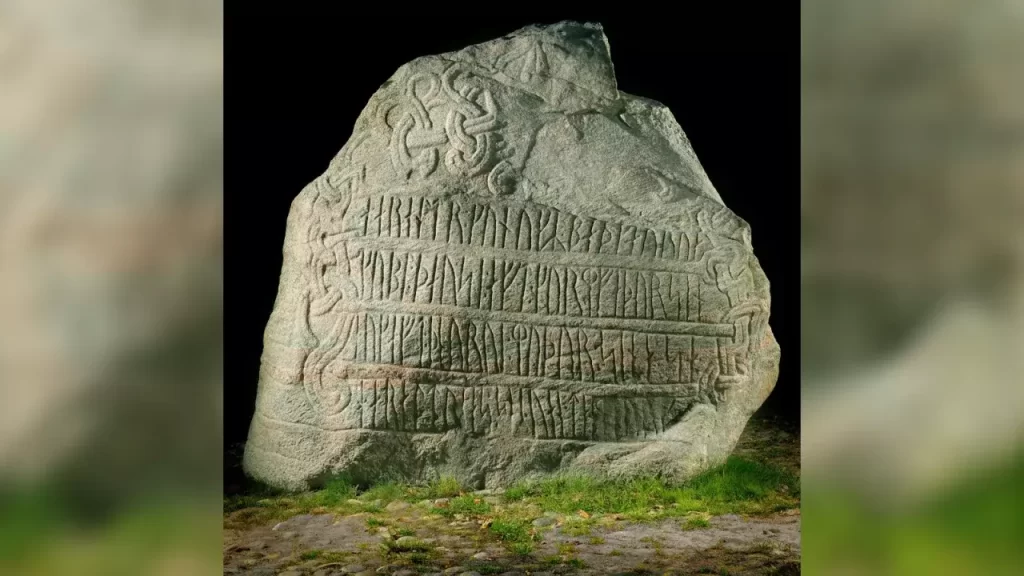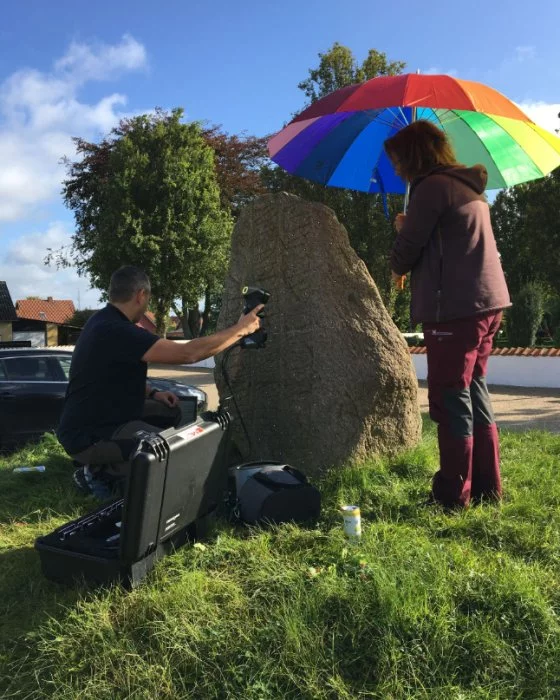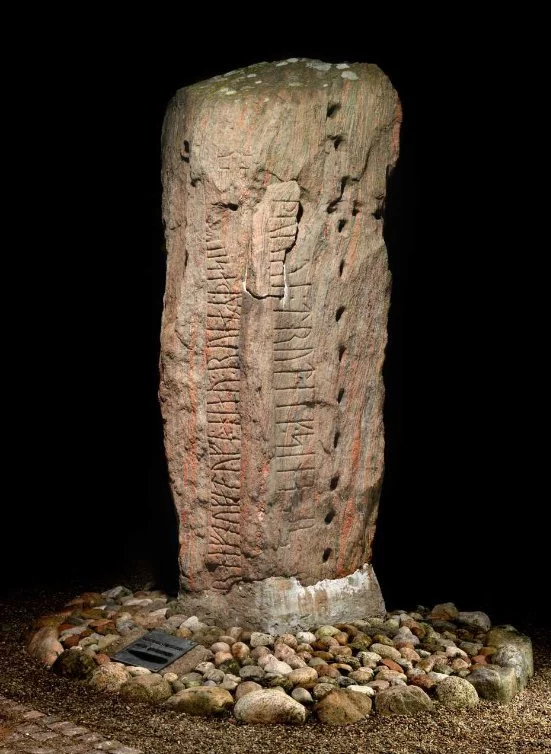3D Scans Of Runestones Reveal The Power Of Viking Queen Thyra
More than 1,000 years ago, carvers in what is now Denmark set their chisels to rock to etch runestones — monuments to Viking leaders naming their deeds and achievements.

Two groups of runestones mention a woman named Thyra, and new analysis of the carvings suggests that the runes on both sets of stones were inscribed by the same artisan and refer to the same woman: a Viking queen of considerable power.
Researchers from Denmark and Sweden used 3D scans to analyze carvings on the runestones, finding telltale clues that marked the individual style of the person who carved them.
That carver’s repeated mention of Thyra’s name — a rare occurrence for Viking-era women — suggested that Thyra was a powerful sovereign who likely played a pivotal role in the birth of the Danish realm, the scientists reported Wednesday in the journal Antiquity.
“To learn more about the rune-carver and those named on the stone is fascinating,” said Dr. Katherine Cross, a lecturer at York St. John University in the UK who researches and teaches the history of early medieval northern Europe. She was not involved in the study.
“We can only understand early medieval sources once we can think about who made them and why,” Cross told ArchaeologyWorldNews in an email.

One set of runes came from a pair of monuments known as the Jelling stones, erected in the town of Jelling around 965.
The larger Jelling stone is often referred to as “Denmark’s birth certificate,” as it’s the first monument to name the land as its people pivoted to Christianity, according to the National Museum of Denmark in Copenhagen.
Both Jelling runestones also named a royal figure: Queen Thyra, mother of then-reigning King Harald Bluetooth.
The smaller stone was raised in her honor by her husband (and Harald’s father) King Gorm, calling her “Denmark’s strength/salvation” (or “Denmark’s adornment,” depending on the translation, the researchers noted in the study). Harald commissioned the larger stone, to honor both of his royal parents.
In another set of four Viking-era monuments, known collectively as the Bække-Læborg group, two runestones mention a woman named Thyra.
Those stones are associated with a carver named Ravnunge-Tue, but experts disagreed on whether that Thyra was Harald’s mother, said lead study author Dr. Lisbeth Imer, a curator and senior researcher at the National Museum of Denmark specializing in the study of runes and ancient inscriptions.

Before the new investigation, it was unknown who had carved the Jelling stones. Confirming that their carver was Ravnunge-Tue would strengthen the connection between the Jelling and Bække-Læborg runestones, Imer told CNN in an email.
“Then it is much more reasonable to suggest that it was in fact the same Thyra,” she said.
A question of style
Some details in ancient runestones that indicate a carver’s individual style are visible to a trained expert’s eye, such as the language or the basic shape of the runes. Other details are harder to detect, Imer said.
“What you cannot see with the naked eye is the carving technique,” she said.
To get a closer look at the carvings, the researchers took scans of the stones and created 3D digital models, then measured the runes’ grooves with a software tool that weighed variables such as angle, depth and cutting rhythm. Together, these variables can create a unique profile for a carver.
“Every rune carver develops his own motor skill and holds the tools in a certain angle, strikes with a certain strength,” Imer said. “The motor skill is individual and other individuals cannot copy that.”


When the researchers compared runes from Jelling 2 (the larger of the two Jelling stones) and the Læborg stone from the Bække-Læborg group, they found striking similarities, such as height of the runes, straightness of the main staves and length and placement of rune branches.
“In the Læborg and Jelling inscriptions you can follow the cutting rhythm of Ravnunge-Tue as one deep stroke of the chisel followed by two not so deep ones: DAK, dak-dak, DAK, dak-dak,” Imer said via email. “It is ALMOST like hearing the heartbeat of a person that lived so long ago.”
Jelling 1 was more eroded, so its markings were harder to analyze. But if the Læborg runestone was Ravnunge-Tue’s handiwork, Jelling 2 was likely his as well, Imer said. It would mean that the Queen Thyra mentioned twice in the Bække-Læborg group — on Læborg and on the stone Bække 1 — was the same person commemorated on the Jelling stones, the study authors concluded.
In recent years, archaeologists have revised prior interpretations of Viking warrior burials as exclusively male, finding that Viking women were fighters, too.
The new findings add to the picture of influential Viking women holding prominent roles in statecraft as well as on the battlefield.

“This research highlights how Viking-Age women wielded power through political authority and patronage, not just violence,” Cross said.
What’s more, the fact that Thyra is mentioned on four runestones offers strong evidence of her importance, Imer added. Fewer than 10 runestones in Denmark from the pre-Christian era mention women at all — and four of those are of Queen Thyra.
“Runestones in Denmark were mostly erected in honour of men, but Thyra is commemorated on more runestones than any other person in Viking Age Denmark,” Imer said. “She must have held extreme power and social position.”



